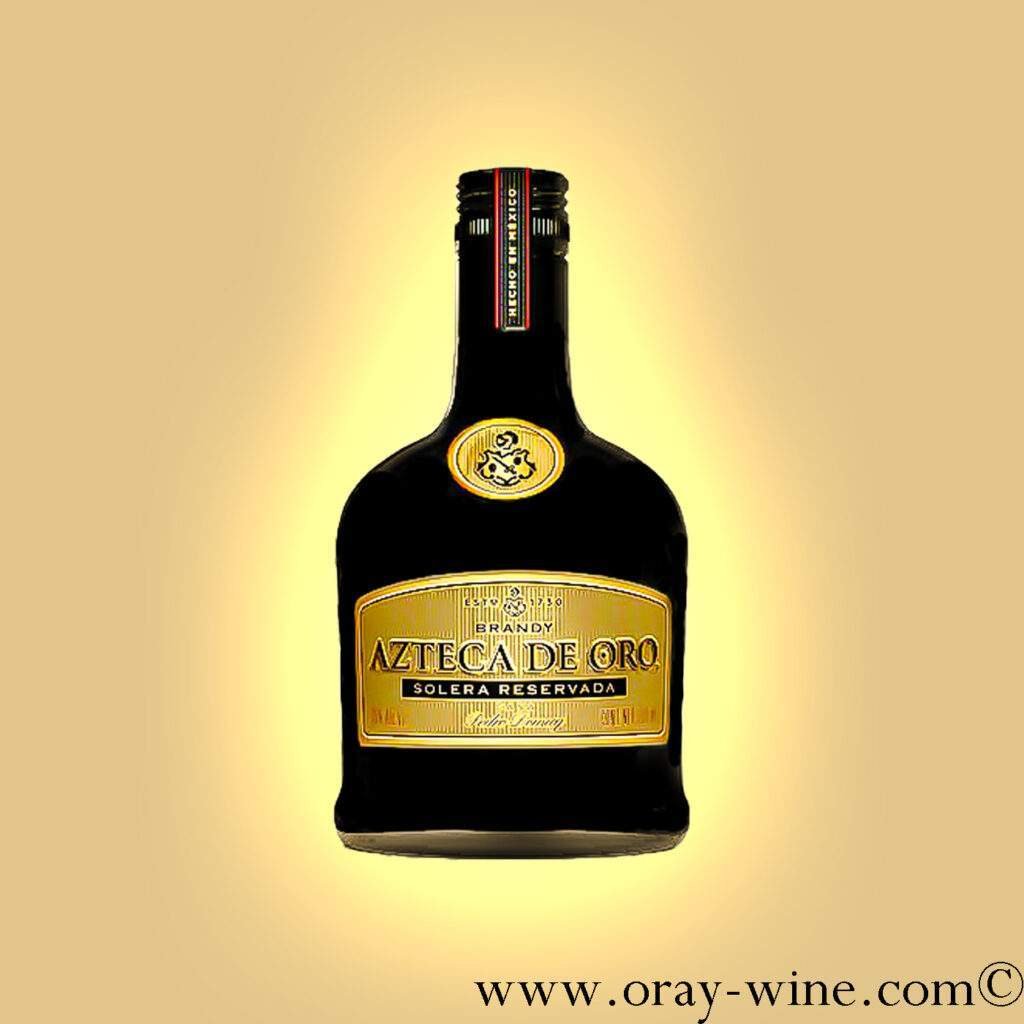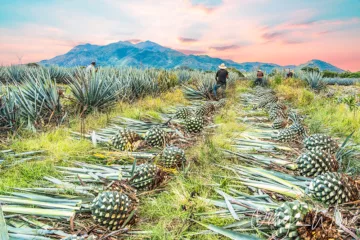
The Early Days
The Spanish conquerors arrived in what we know as Mexico in 1517, and by 1520, the territory had become New Spain. The Spanish colonists soon turned the new fertile land into a mirrored image of their European home. This included planting enough grapevines to satisfy their thirst for wine.
In 1524, Hernán Cortés, New Mexico’s governor, ordered every colonist to plant 1,000 vines for every hundred enslaved people on their estate. Of course, not all grapes were destined to become wine (Spain has always loved well-aged brandy).
In 1595, Philip II, King of Spain, forbade wine grape production in New Spain, as it was becoming a serious competition for Spanish winemakers. Importing Spanish wine and brandy became the norm, a trend still seen today!
Mexico’s War of Independence, Civil War, Revolutionary War, and the appearance of the phylloxera grapevine pest prevented Mexico’s grape production from thriving during the next few centuries, which takes us to the 20th century.

The Golden Years
“Unlike wine, brandy was soon adopted by Mexicans, especially when blended with another new arrival”
Mexico’s Revolutionary War ended in 1911, and a new era had begun. The enthusiastic new government, led by President Guadalupe Victoria, abolished slavery, founded a democratic government, and set its aim on restoring Mexico’s worn-down agricultural industry. Vineyards were planted all around the country; the future for wine lovers looked bright.
There was a problem: the Spanish were the wine drinkers in Mexico, and they were long gone; Mexico was left with no local market for wine. Mexicans are just starting to acquire a taste for fermented grape juice well into the 21st century. One hundred years ago, wine had no significance in people’s lives. What to do with grapes if not wine? Brandy, of course.
Unlike wine, brandy was soon adopted by Mexicans, especially when blended with another new arrival, Coca-Cola, which started producing its famous soft drink in Mexico in 1926.
Although Tequila has always been the most consumed spirit in Mexico, rum was a strong second during the 30s and 40s. The arrival of the Spanish brandy powerhouse, Casa Pedro Domecq, in 1947 changed brandy’s luck. The company put the country’s forgotten vineyards to work and began capitalizing on Mexico’s thirst for inexpensive spirits. The company launched Brandy Presidente in 1958.

By the 1980s, Domecq produced Brandy Presidente in 10 distilleries around Mexico, and Brandy, not Tequila, became Mexico’s favorite drink after beer. Marketing played a role in brandy’s success — despite the spirit’s poor quality, brandy was marketed as an aspirational beverage, a drink with noble Spanish heritage that separated those who enjoyed it from the uneducated Tequila drinking crowds.
Mexico’s one percent, the people with high expendable income, also stayed clear of tequila, a “poor man’s spirit,” in favor of brandy. Those with the means, of course, drank authentic Spanish brandy rather than local knockoffs. Even today, prestigious Brandy de Jerez brands such as Torres, Cardenal de Mendoza, Gran Duque de Alba, and Terry are top-shelf in most bars and restaurants in Mexico.

Brandy Today, An Uncertain Future
“The market was immediately flooded with high-quality products from around the world”
The last few decades of the 20th century were the stage for significant changes in the Mexican spirit sector. Mexico opened its doors to the international market with the NAFTA agreement with the USA and Canada in 1992. A similar agreement with the European Union soon followed.
The market was immediately flooded with high-quality products from around the world, from M&Ms and Nike tennis shoes to Absolut Vodka. Only the strongest Mexican companies survived the transition, but the real winners were the consumers. Mexicans had access to various products for the first time, including the finest distilled spirits on the planet.
It’s no surprise that the generation that turned 18 (Mexico’s legal drinking age) around that time steered in the direction of Swedish Vodka, American Bourbon, Scotch and London Gin. Their parents became the only safe haven left for the old-fashioned and often mediocre national brandy industry. It comes without saying, the brandy drinking generation is now, on average, 70 years old.
Brandy in Mexico; The Future

A competitive market is favorable for every player, large or small, if they find their niche. Blended Scotch, gin, and other international spirits have gained a significant share of the Mexican market, and Agave spirits are not considered a lesser alternative anymore (in fact, they’re trendy). As for Brandy, although the finest Brandy de Jerez has a place up there with the best Cognac, it is not nearly as popular as it used to be (it’s still popularly mixed with Coca-Cola.)
The national Brandy production — that’s another story. Pedro Domecq’s once famous Bandy Presidente has become the last resort for college students with shallow pockets and those in desperate need of one more drink before calling it a night. A 31.6oz bottle of Presidente costs US14 at Walmart, although pocket-sized bottles are more common.
As reported in the New York Times on September 5, 1984, Domecq was selling “over 6 million cases (i.e., 72 million bottles) of its three brands of brandy a year. That represents a bottle for every man, woman, and child in Mexico” (1); representing 39 percent of the country’s spirit sales, followed by Tequila with 22 percent. So, what happened to Domecq?
In 1994, the British firm Allied Lyons acquired Domecq Mexico; the company was sold to Pernod Ricard in 2005 and returned to Spain in 2016 when it was acquired by the Sherry Brandy Company, Gonzáles Byass. It seems the last remnants of Spanish colonialism have finally left Mexican soil. And although Domecq is still a prominent company in Mexico, its brandy empire is long gone.
In 2022, Mexican Brandy is experiencing a full-blown revamp and makeover, and it is now looking for consumers elsewhere. With the slogan “From Mexico for Everyone,” González Byass-owned Domecq is looking to position Brandy Presidente in the foreign market. Presidente is the second-largest imported brandy in the U.S. (2). Will Americans take it if Mexico doesn’t want it?

Follow me on my Social Media
Wine is a gourmet treasure, do not abuse alcohol!
None of this content has been sponsored
I did not receive any gifts or free samples that could be related to this article
Wine is a gourmet treasure, do not abuse alcohol!
None of this content has been sponsored
I did not receive any gifts or free samples that could be related to this article
Sources:
1. https://www.nytimes.com/1984/09/05/garden/the-national-drink-in-mexico-brandy.html

